Exemplary persons are not mere vessels, Practice by Virtue and Skills
In Memory of Mr. Jao Tsung-i
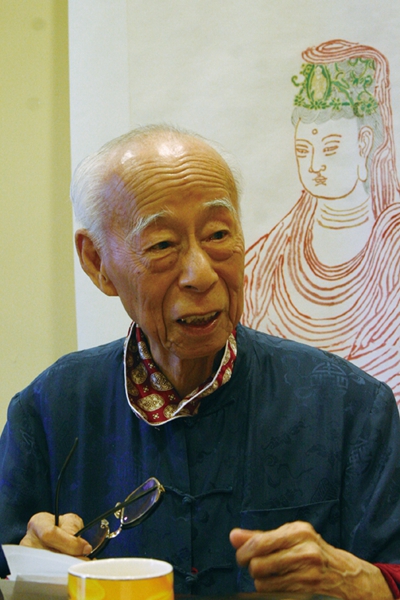
Jao Tsung-i

Sketching of Gaolan Mountain, (Chinese Painting) Jao Tsung-i

Unique characters of ancient and modern China (calligraphy) Jao Tsung-i
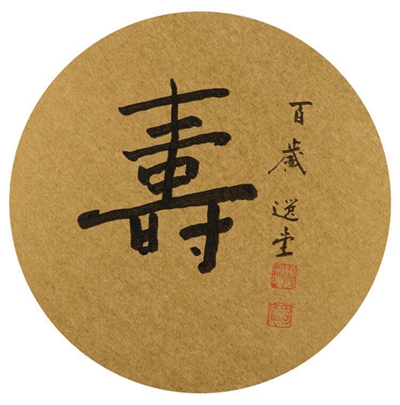
Longevity (calligraphy) Jao Tsung-i
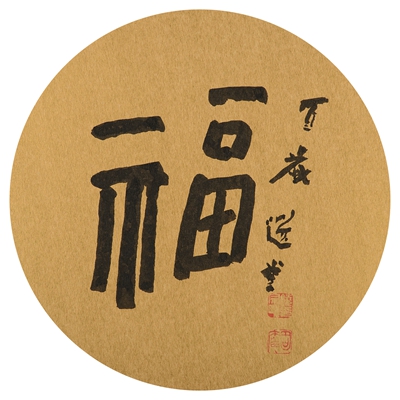
Blessing (calligraphy) Jao Tsung-i
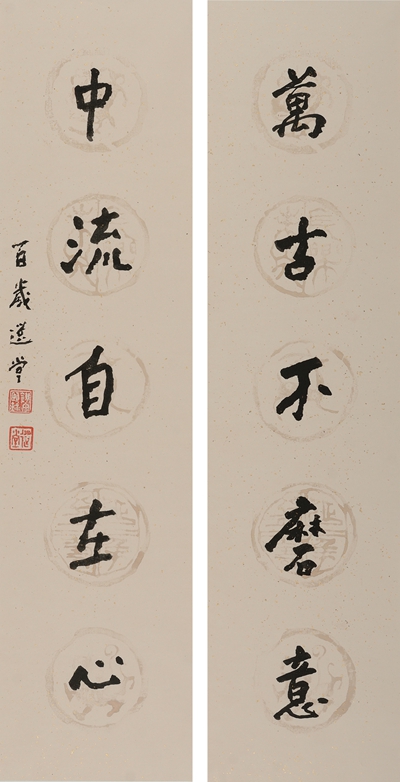
Unchangeable Willingness, Durable Faith (calligraphy) Jao Tsung-i
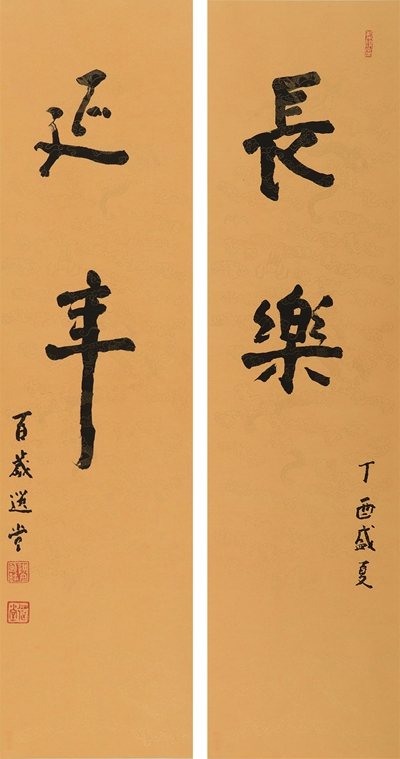
Longevity with joy (calligraphy) Jao Tsung-i
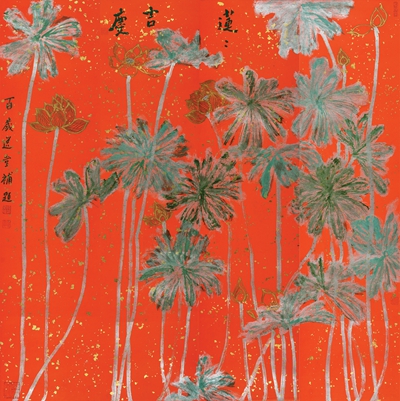
Glamour of the lotus (Chinese Painting) Jao Tsung-i
Pass-away of Mr. Jao Tsung-i, known as the Jao of South and JI of North, on February 6 is undoubtedly a major loss for the Chinese cultural community.
With a most broad path in both academy and art, Mr. Jao is considered to have reach the ideal height of what the Confucius called the “exemplary persons are not mere vessels”.Mr. JIXianlin said that “the great master in his mind is Mr. Jaotsung-i”, Mr. QIAN Zhongshu called him a “matchless genius” and Mr. Louis Cha said that “Hong Kong is not a cultural desert with the presence ofMr. Jao Tsung-i”. Having learned from both the Chinese and Western cultures, he has won many reputation: receiving a number of awards, honorary doctorates and honorary professorships, including “Julien Award” of Institution of France, Foreign Academician of Institution of France, Honorary Member of the Asian Society of Paris, First Chinese Doctor of Humanities and Humanities of France Higher Institute of Research and Practice, Grand Bauhinia Medal from Hong Kong Government, Lifetime Achievement Award of Hong Kong Arts Development Council, etc., reflecting the high commendation from the academic community.With unprecedented and in-depth academic and artistic realm, Mr. Jao had profound knowledge in history, poetry, calligraphy, works and others. It was truly incredible that a scholar could write more than 60 books and over 500 dissertations in his life span of 101 years. He was also proficient in six or seven foreign languages, together with achievement in calligraphy and painting. Mr. Jao’s accomplishments, in my opinion, can be summed up in 10 aspects: Dunhuang studies, oracle bone studies, studies of words, historiography, bibliography, Chuci studies, archeology, philology, calligraphy, painting and poetry aesthetics. In these ten aspects, with the strength of an individual, Mr.Jao has made a valuable contribution.
Mutual Benefit of Sinology Spirit
There is a basic consensus in the academic community: “Jao of South and JI of North”, indicating Mr.Jao Tsung-i from Hong Kong to the south and Mr. JI Xianlin to the north. The two academic masters are proficient in several foreign languages and literature works etc., reaching a very high academic level. However, they didn’t only cast attention to learning, but showing their concerns to the whole world---paying attention to the Chinese cultural destiny in globalization! The methodology for scholarship of Mr. Jao inspires for us to learn, including the study of calligraphy and fine arts:
Firstly. Courage for innovation. It highlights the new methods, ideas and materials. I have noticed Mr. WANG Guowei’s Double Evidence Method: unearthed cultural relics and paper documents. Literature is literal, and unearthed cultural relics are physical objects that can support the authenticity of historical facts. Mr. Jao has added another new perspective–oracle bone inscription, which were unearthed underground. However, its value is not to research the oracle bones, but the text on it, which is also a document accordingly. I think this is a major academic advancement after the achievement of Mr. WANG Guowei.
Secondly. Mr. Jao highly valued the significance of sinology and Chinese traditions, casing attention to the Evidence of both Chinese and Western in methodology. Some scholars simply compared the Chinese connotation to Western connotation or reverse, which is of large problem. According to Jao Tsung-i, the main body of Chinese culture is Confucian studies. The sinology is the culture of China. Each country has its own culture. And it is unreasonable on a global scale when calling the Chinese culture the sinology. Therefore, he advocated more accurately that it should be called “Han School of Classical Philology” or “Chinese learning". In this regard, he expressed his deepest esteem for the Confucian classics and history, stressing that the study of sinology should not desecrate the Fundamental Principles of Country, but to cherish the respect of "ancient meaning", interpret the Confucian classics and history along the origins of the Chinese culture, preserve all the materials concerning China with view of BitCulture partially supported by the context of Western culture. From this point of perspective, he was a man Understanding All Issues from East and West with a cold eye.
Thirdly. Academic rationality and innovation. This is the most important character of a scholar. He criticized the suspiciousancient-school for excessively suspicion of Chinese history, including disagreement with scholars of such school to make the area of China’s central plains smaller and smaller. His research should reveal the deep structure and ancient spirit of Chinese culture, learning from every academic faction of the century academics. Mr. Jao said: "As Mr. LU Xun spoke, modern scholars are often influenced by countries and schools. I try to make more contacts with scholars from various countries and schools of thought, including 1 year in the United States, 4 years in Japan, and 5 years in Singapore and months in France, Spain, India, and other places, thoroughly committing myself to research of local topics".Fourthly. The bold use of comparative literature in literary studies. According to Mr. JI Xianlin: Professor Jao uses the methods of comparative literature to explore the origins of ancient Chinese literature, inspiring us to study the history of ancient Chinese literature. Mr. Jao believes that the Chinese characters play the key role in the article of "Chinese Character and Poetics" - the characteristics of Chinese poetry are closely related to Chinese characters.In his article, Mr. Jao discussed some issues related to the form of poetry, and rhythm as well,all of which is based on the characteristics of Chinese characters.
Supreme Attainments in Calligraphy
Starting learning from YAN Zhenqing of Tang Dynasty in his childhood, Mr. Jao copied the YAN Qinli Inscription, YAN Shi Jiamiao Inscription and MaguXiantanji , followed by Zhangmenglong Inscription and Cuanbaozi Inscription in order to strengthen his wrist force, study of Huadu Temple Inscription of OUYANG Xun of Tang Dynasty for precise and accurate structure, copy of running script of SU Shi, HUANG Tingjian and MI Fu of Song Dynasty for the beauty of calligraphy in order to understand the inner charm. Into his middle age, due to the academic research institute, studies of Dunhuang and oracle bone, Mr. Jao has composed the Warring States Chujianzheng, Bianzhong Mingshi, Ju Yan Ling Jian, Oracle Archives Seen in Japan, Oracle Archives Seen in Paris, New Interpretation of Warring States Period Books Unearthed in Changsha, Selection of Overseas Oracle Records, and Records of Divination Figures of Yin Dynasty, which undoubtedly affected his calligraphy interest and style, resulting in the law changes at his middle age. He was keen on characters of Jin dynasty on oracles, bamboo slip and silk, and official script of Han dynasty with much endeavor. Mr. Jao Tsung-i noted in the Ten Musts of Books: newly-unearthed books of bamboo slips and silks of Qin Dynasty are of intact conditions, showing slim structures and unprecedented skills. The new methods embedded are waited to be explored.
In his later years, he had a long-term commitment in Dunhuang calligraphy. He chose the essence collection of Dunhuang scriptures in Paris and composed the “Dunhuang Calligraphy Series”, a 29-volume edition, transforming the entire academic and calligraphy nourishments into his own calligraphy style and finally forming a different style from the various factions, an ancient calligraphy style. He did not take the road of folk calligraphy, nor the road of Western abstract calligraphy. Instead, he firmly adhered to the road of great beauty that melts the tradition and inscriptions, extensively involving in the study of calligraphy copybook, bamboo slips, oracle bones, and Wei Inscription, forming his exclusive style.
Mr. Jao had his own aesthetic principles concerning the book theory. In his Ten Musts of Books, he advocated that the body of the calligraphy should be "Heavy" "Dull" and "Large", but not "Light, Enchanting, Thin", avoiding being slippery and vulgar in writing while focusing on thick and durable, following hands and hearts in copying inscriptions with deep thought and adhering to Bright Ink, Smooth Lines and Natural Combination etc. In my opinion, there are many calligraphers and scholars in China, however, it is truly rare to find someone whose calligraphy capacity is as much as that of Mr. Jao in mastery, unique style and free acknowledgement of ancient tradition. This has a lot to do with his calligraphic attitude — disdain to mountain-stronghold mentality in calligraphy and genreism. He was devoted to daily writing with his own shadow and few social activities. Only through focusing on spiritual solitude and cultivation of life can it lead to the beauty of calligraphy beyond words.
Sophisticated Style in Literati Painting
Mr. Jao Tsung-i has devoted great energy to the creation of Chinese literati painting and attained the art height acknowledged by the public. He has made much new practice in the creation of literati painting, and the pertinent achievements were by no means lower than that of his academic gains, which were recognized by people of all fields.
The literati painting generated new changes due to Mr. Jao, who was no longer passionate about the shape of the original manuscript, but holding profound insight of great artworks of ancient times deeply immersed in his landscape paintings or painting of artificial landscapes. According to painter HUANG Miaozi, the reason why Jao Tsung-i's paintings had “great acknowledgement” was inseparable from his extensive knowledge. WAN Qingli, an art historian believed that the painting of Mr. Jao has surpassed the traditional Literati Painting, and was an extremely rare "painting of scholars" in the history of Chinese painting.
In his later years, the creative power of Mr. Jao tsung-i burst out, especially on the paintings of Dunhuang that he loved. With an ever-lasting and sophisticated gesture while using the freehand brushwork with integration of large area of ink together with substantial dryness to depict the artistic conception of Dunhuang murals, he has opened a new aesthetic path of literati paining for the Dunhuang murals via the form of a similarity to realize the genuine likeness so as to pursue the Northern Wei Dynasty and the Sui and Tang Dynasties. At the beginning of the 21st century, due to his discontent over the disputes between the “Southern Bound” and “Northern Bound” in the history of Chinese painting, he proposed a unique way to put forward the theory of “Northwestern Bound” in the field of Chinese landscape painting, and used his unique brushstroke method and magnificent voluminous structural phenomena to paint the majestic landscape of the northwestern part of China, while practicing the aesthetic principles of the Northwestern Bound in the field of landscape painting.
A great scholar of “Exemplary Persons are Not Mere Vessels, Practice by Virtue and Skills”, Mr. Jao Tsung-i will be remembered by the history.














